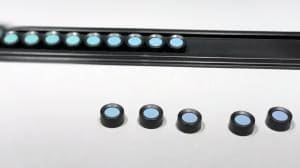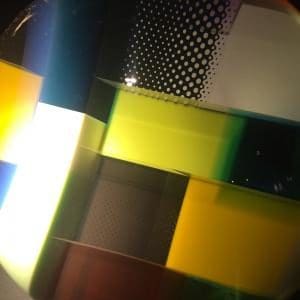100 Days of Color and Materials Design
January 20, 2020CCS graduate students created rich and insightful blogs during this semester-long course in trend forecasting.
CCS Chair of MFA Color and Materials Design Sally Erickson Wilson first learned of the 100 Day project in 2014 via an essay and podcast at the Design Observer. The project, which began as a workshop led by designer and critic Michael Bierut, challenged graduate graphic design students at Yale School of Art to “do a design operation that you are capable of repeating every day” for a period of 100 days.
Erickson Wilson’s students have used this repetitive structure in the past with fascinating results, as the commitment to a daily discipline removed the barriers of “do I/don’t I like the work?” This spring, 100 Days provided a starting point for a semester-long assignment in the “Trend Forecasting and Future Scenario Planning” research course. For the Color and Materials Design (CMD) assignment, students were charged with creating an individual blog “that captures trends and developments in consumer behavior, technology, the arts, design, business, the economy, sustainability and the environment.” The choice was up to the student.
“Initially, it started as ‘blog every day for 100 days.’ Then it became, over time, ‘blog regularly over a period of 100 days,’” Erickson Wilson said. “Sometimes students would do a quick in-and-out post and sometimes they would explore a topic in more depth. So there was flexibility in the assignment that enabled students to develop a point of view.”
The purpose of blogging, Erickson Wilson explained, is twofold: to design an experience in which learning takes place primarily outside of the classroom and to help Color and Materials Design students develop and hone an authorial voice. As many graduates of the MFA program will work as CMF (color, materials and finishes) professionals in various industries, the ability to identify, report on and, ultimately, forecast trends are mandatory necessary skills.
CMD student Julia Jueckstock initially balked at the idea of blogging about sustainable gear for a hundred days, but eventually found a rhythm that worked for her, and for her subject matter. “I think a lot of the challenge of my blog was putting together everything I had found and making one, compact post about it,” said Jueckstock. “In the beginning I started out with the idea of sustainable gear, but the blog ventured out beyond that and started looking at materials — materials for gear, materials for outdoor apparel. I found that I was spending way too much time on one post. I’ve definitely developed an appreciation for what it takes to do a blog well.”

Sydney Hembree, a BFA senior in Transportation Design (with a concentration in Color and Materials Design), found that the assignment offered different challenges — and rewards. Using her blog as a kind of personal diary, with a good dose of technology, she documented a broad array of trends and topics from an underwater hotel to a recent CCS Woodward Lecture by renowned designer Anna Sui. Hembree noted, “A lot of my ideas come from my friends on social media: artists and designers are always posting about those things. I went with a friend to a gallery show and documented all the colors and textures and materials I saw there and made a post about that.”
A simple idea, but one that Erickson Wilson notes is a key part of progressing through the course: to learn the difference between trend reporting and trend forecasting.
“This blog assignment is very much trend reporting because students are citing someone else’s work,” she said. “But when they start looking outside of design for inspiration — whether it’s at a gallery show or glass factory or painting or fine art — that’s when they start developing their own photographic assets and start moving more toward forecasting.”

Product Design senior Christopher Weld’s blog covered a wide array of products and trends, from a new line of energy efficient window blinds to an Atlanta dining pop-up featuring luminescent ramen noodles. Like classmate Jueckstock, however, his focus during the 100 days returned again and again to environmental-themed posts, such as painter Danielle Eubanks’ ocean abstracts, Alaskan whale fishing and sustainable products made from flax.
What becomes apparent is that, while 100 days of blogging — particularly about the ideas of others — can at first seem daunting and difficult to maintain, an authorial point-of-view nevertheless emerges.
“That’s one of the things I found most interesting about the project,” Hembree added, “developing my own voice. Sometimes your work can tend to bleed into everyone else’s. But in Color and Materials, everyone does have their own perspective and people [who read the blog] are curious about that.”
Read the Color and Materials Design blogs by Sydney Hembree, Julia Jueckstock and Christopher Weld and learn more about Michael Bierut’s 100 Day workshop at Design Observer and listen to Episode 4: Our Favorite Things.
